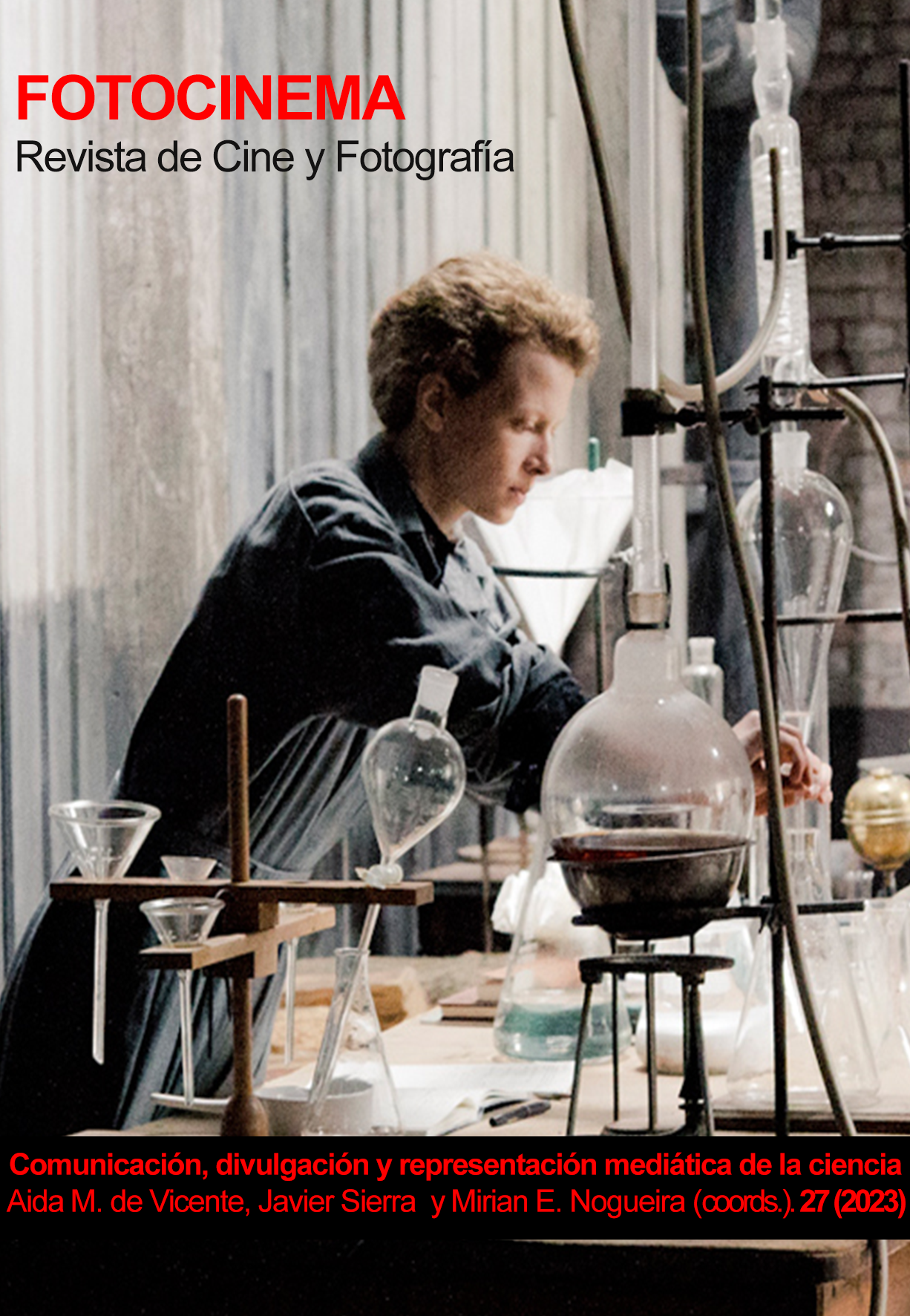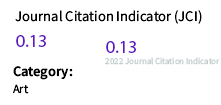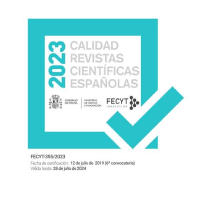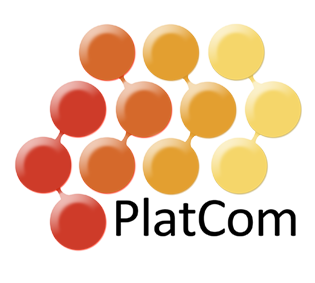Film grammar and 3D animation for science dissemination
DOI:
https://doi.org/10.24310/Fotocinema.2023.vi27.16510Keywords:
Film grammar; scientific dissemination; 3D animation; 3D modelingAbstract
To pay special attention to the audiovisual language used in productions aimed at the dissemination of scientific knowledge plays an important role in the processes of knowledge transfer and it is crucial to arouse interest in science. Nowadays, our visual culture is strongly influenced by the audiovisual material created through the entertainment industry, including the powerful video game industry and cinema, both actors in a process of mutual influences full of reciprocal affections.
This work addresses the production of audiovisual material aimed at the dissemination of scientific content, making use of advanced graphic technologies such as 3D modelling and animation. The use of this technology is at the service of a visual grammar inherited from the film industry. The conjunction of both elements is exemplified by an analysis of an audiovisual production for scientific dissemination entitled "The cell. Unit of Life".
Downloads
Metrics
References
Anderson, J., Barnes, E., y Shackleton, E. (2011). The art of medicine: over 2,000 years of images and imagination. University of Chicago Press.
Bayo, I., Menéndez, O., Fuertes, I., Milán, M., y Mecha, R. (2019). La Comunidad Científica ante las Redes Sociales. Guía de Actuación para Divulgar Ciencia a través de ellas. DIVULGA.
Barr, M. (2017). Video games can develop graduate skills in higher education students: A randomised trial. Computers & Education, 113, 86-97.
Berney, S., y Bétrancourt, M. (2016). Does animation enhance learning? A meta-analysis. Computers & Education, 101, 150-167.
Berney, S., y Bétrancourt, M. (2017). Learning three-dimensional anatomical structures with animation: Effect of orientation references and learners’ spatial ability. Learning from Dynamic Visualization: Innovations in Research and Application, 279-303.
Blanz, V., Vetter, T., Bülthoff, H. H., y Tarr, M. J. (1995, August). What object attributes determine canonical views?. In 18th European Conference on Visual Perception (ECVP 1995) (pp. 119-120). Pion Ltd..
Boon, T. (2008). Films of fact: a history of science in documentary films and television. Wallflower Press.
Botsis, T., Fairman, J. E., Moran, M. B., y Anagnostou, V. (2020). Visual storytelling enhances knowledge dissemination in biomedical science. Journal of biomedical informatics, 107, 103458.
Carroll, N., y Seeley, W. P., (2013). Cognitivism, psychology, and neuroscience: Movies as attentional engines.
Castro-Alonso, J. C., Ayres, P., y Paas, F. (2016). Comparing apples and oranges? A critical look at research on learning from statics versus animations. Computers & Education, 102, 234-243.
Cutting, J. E. (2005). Perceiving scenes in film and in the world. Moving image theory: Ecological considerations, 9-27.
Davis, L. S., y León, B. (2018). New and old narratives: Changing narratives of science documentary in the digital environment. In Communicating Science and Technology through Online Video (pp. 55-63). Routledge.
de Koning, B. B., y Jarodzka, H. (2017). Attention guidance strategies for supporting learning from dynamic visualizations. Learning from dynamic visualization: Innovations in research and application, 255-278.
Diwadkar, V. A., y McNamara, T. P. (1997). Viewpoint dependence in scene recognition. Psychological science, 8(4), 302-307.
Emhardt, S. N., Jarodzka, H., Brand-Gruwel, S., Drumm, C., Niehorster, D. C., y van Gog, T. (2022). What is my teacher talking about? Effects of displaying the teacher’s gaze and mouse cursor cues in video lectures on students’ learning. Journal of Cognitive Psychology, 34(7), 846-864.
Frank, S. (2003). Reel reality: Science consultants in Hollywood. Science as Culture, 12(4), 427-469.
Garsoffky, B., Schwan, S., y Huff, M. (2009). Canonical views of dynamic scenes. Journal of Experimental Psychology: Human Perception and Performance, 35(1), 17.
Gouyon, J. B. (2016). Science and film-making. Public Understanding of Science, 25(1), 17-30.
Hegarty, M. (2004). Dynamic visualizations and learning: Getting to the difficult questions. Learning and Instruction, 14(3), 343-351.
Huk, T. (2006). Who benefits from learning with 3D models? The case of spatial ability. Journal of computer assisted learning, 22(6), 392-404.
Iwasa, J. H. (2016). The scientist as illustrator. Trends in immunology, 37(4), 247-250.
Jenkinson, J., y McGill, G. (2012). Visualizing protein interactions and dynamics: evolving a visual language for molecular animation. CBE—Life Sciences Education, 11(1), 103-110.
Jenkinson, J. (2017). The role of craft-based knowledge in the design of dynamic visualizations. Learning from dynamic visualization: Innovations in research and application, 93-117.
Khooshabeh, P., y Hegarty, M. (2010, March). Representations of shape during mental rotation. In AAAI Spring symposium: Cognitive shape processing (pp. 15-20).
Latour, B. (1990). Technology is society made durable. The sociological review, 38(1_suppl), 103-131.
Lowe, R. K., y Schnotz, W. (2014). Animation principles in multimedia learning. The Cambridge handbook of multimedia learning, 2, 513-546.
Lowe, R., y Ploetzner, R. (2017). Learning from dynamic visualization. Cham, Switzerland: Springer.
Lowe, R., y Boucheix, J. M. (2017). A composition approach to design of educational animations. Learning from dynamic visualization: Innovations in research and application, 5-30.
Loschky, L. C., Larson, A. M., Smith, T. J., y Magliano, J. P. (2020). The scene perception & event comprehension theory (SPECT) applied to visual narratives. Topics in cognitive science, 12(1), 311-351.
Macedo, B., y de Montevideo, U. O. (2016). Educación científica.
Maddock, D. (2019). Reframing cinematography. Media Practice and Education, 20(1), 44-66.
Malkiewicz, K., y Mullen, M. D. (2009). Cinematography. Simon and Schuster.
Mascelli, J. V. (1965). The five C's of cinematography (Vol. 1). Hollywood: Grafic Publications.
Mayer, R. E., y Moreno, R. (2002). Animation as an aid to multimedia learning. Educational psychology review, 14, 87-99.
Mayer, R. E. (2017). Using multimedia for e?learning. Journal of computer assisted learning, 33(5), 403-423.
McGill, G. G. (2017). Designing instructional science visualizations in the trenches: Where research meets production reality. Learning from dynamic visualization: Innovations in research and application, 119-150.
McGill, G. G. (2022). Knowledge synthesis through scientific visualization. Nature Microbiology, 7(2), 185-185.
Mital, P. K., Smith, T. J., Hill, R. L., y Henderson, J. M. (2011). Clustering of gaze during dynamic scene viewing is predicted by motion. Cognitive computation, 3, 5-24.
National Research Council. (1996). National science education standards. National Academies Press.
Ploetzner, R., Berney, S., y Bétrancourt, M. (2021). When learning from animations is more successful than learning from static pictures: learning the specifics of change. Instructional Science, 49(4), 497-514.
Sanchez, C. A., y Wiley, J. (2017). Dynamic visuospatial ability and learning from dynamic visualizations. Learning from dynamic visualization: Innovations in research and application, 155-176.
Schwan, S. (2013). The art of simplifying events.
Schnotz, W., y Lowe, R. K. (2008). A unified view of learning from animated and static graphics. Learning with animation: Research implications for design, 304-356.
Smith, T. J., Levin, D., y Cutting, J. E. (2012). A window on reality: Perceiving edited moving images. Current Directions in Psychological Science, 21(2), 107-113.
Tarr, M. J. (1995). Rotating objects to recognize them: A case study on the role of viewpoint dependency in the recognition of three-dimensional objects. Psychonomic Bulletin & Review, 2, 55-82.
Teplá, M., Teplý, P., y Šmejkal, P. (2022). Influence of 3D models and animations on students in natural subjects. International Journal of STEM Education, 9(1), 65.
Tversky, B., Heiser, J., Mackenzie, R., Lozano, S., y Morrison, J. (2008).+Enriching animations. Learning with animation: Research implications for design, 263-285.
Van Dijck, J. (2006). Picturizing science: The science documentary as multimedia spectacle. International Journal of Cultural Studies, 9(1), 5-24.
Winston, B. (2012). The documentary film as scientific inscription. In Theorizing documentary (pp. 37-57). Routledge.
Downloads
Published
How to Cite
Issue
Section
License
All contents published in Fotocinema Revista científica de cine y fotografía are protected under the Creative Commons Attribution-NonCommercial-ShareAlike 4.0 International (CC BY-NC-SA 4.0) license. All about this license is available in the following link: <http://creativecommons.org/licenses/by-nc-sa/4.0>
Users can copy, use, redistribute, share and exhibit publicly as long as:
- The original source and authorship of the material are cited (Journal, Publisher and URL of the work).
- It is not used for comercial purposes.
- The existence of the license and its especifications are mentioned.
There are two sets of authors’ rights: moral and property rights. Moral rights are perpetual prerogatives, unrenounceable, not-transferable, unalienable, imprescriptible and inembargable. According to authors’ rights legislation, Fotocinema. Revista científica de cine y fotografía recognizes and respects authors moral rights, as well as the ownership of property rights, which will be transferred to University of Malaga in open access. The property rights are referred to the benefits that are gained by the use or the dissemination of works. Fotocinema. Revista científica de cine y fotografía is published in an open access form and it is exclusively licenced by any means for doing or authorising distribution, dissemination, reproduction, , adaptation, translation or arrangement of works.
Authors are responsable for obtaining the necessary permission to use copyrighted images.










.png)

13.png)




